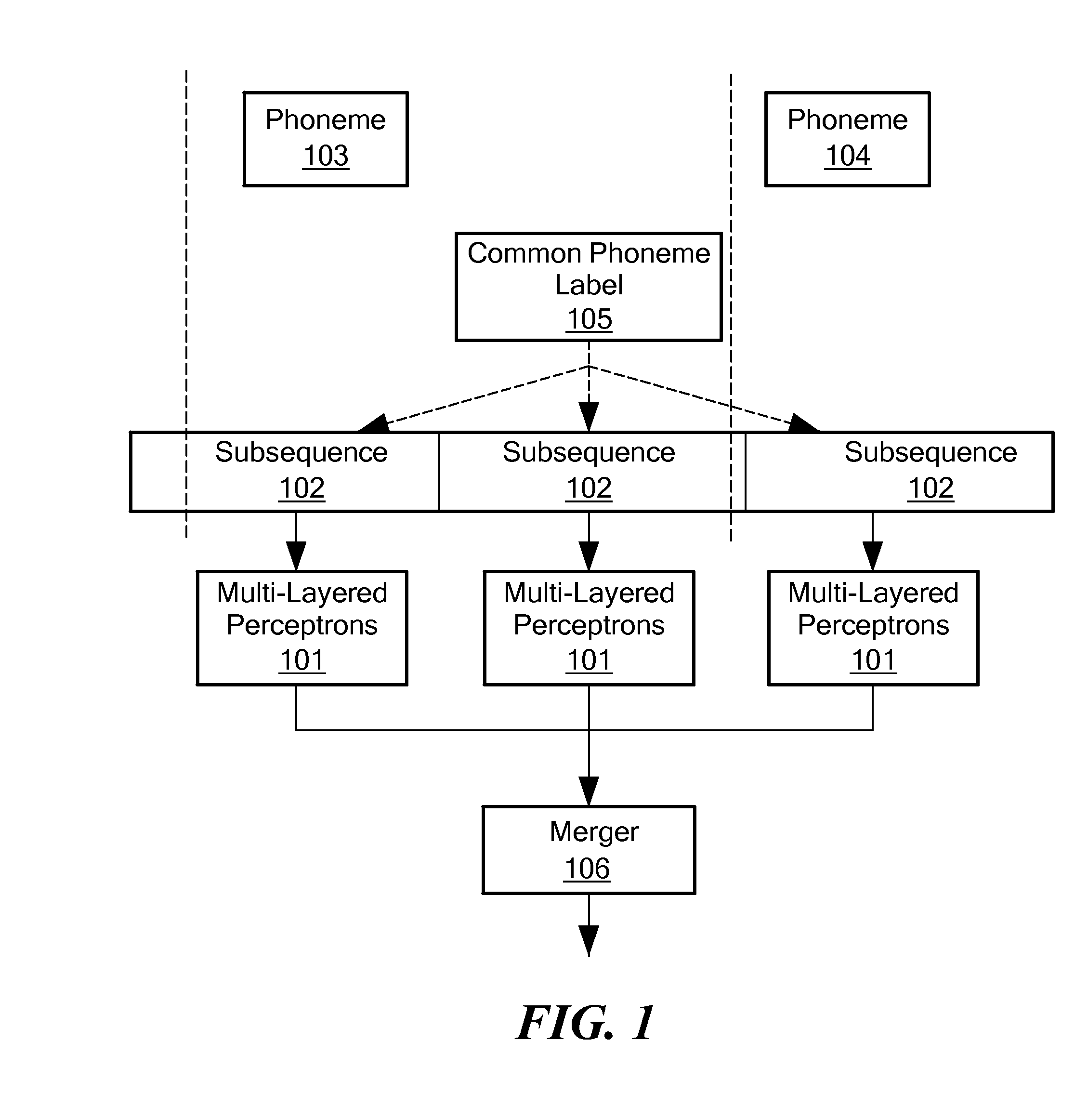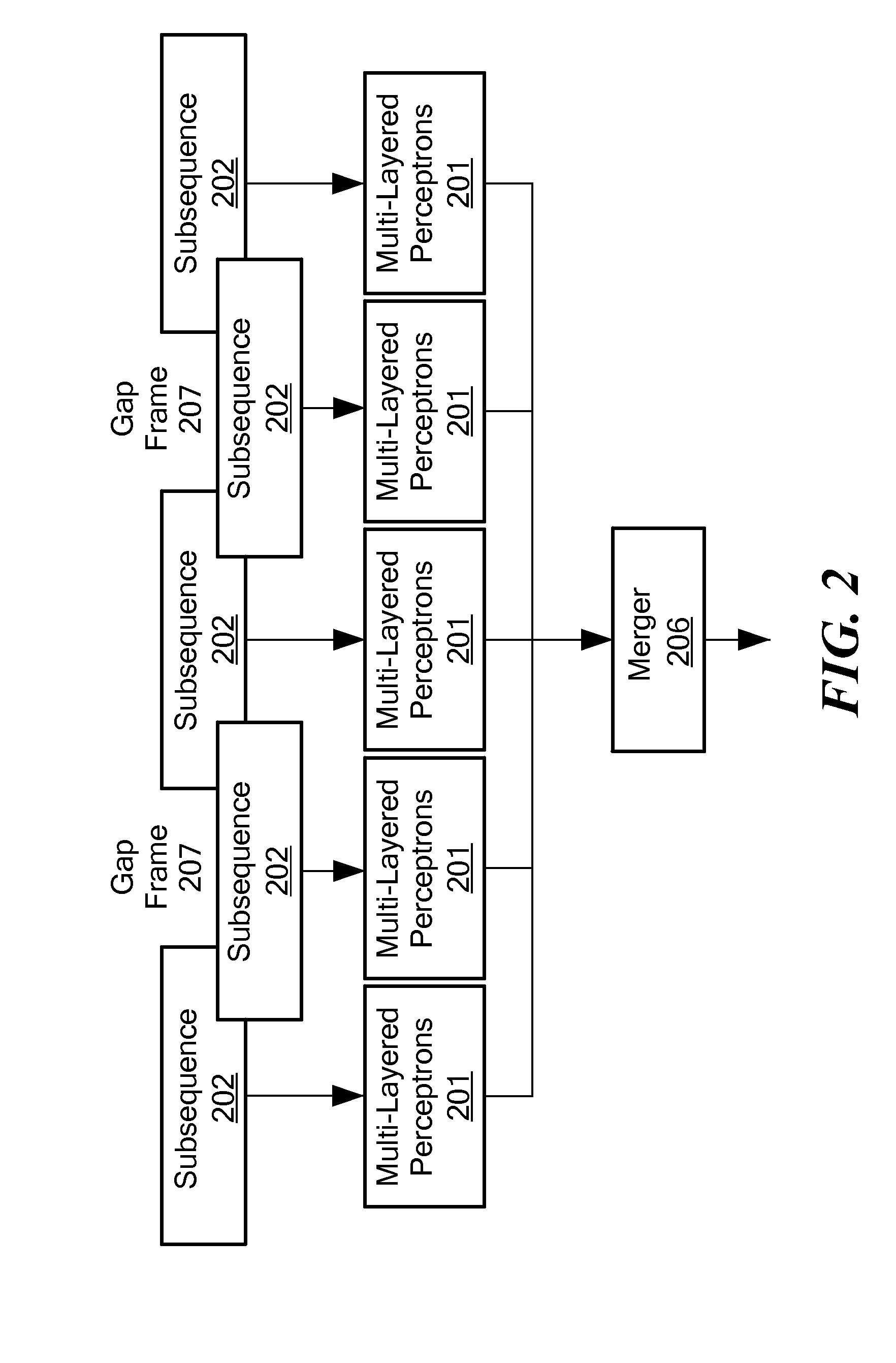Method for automated training of a plurality of artificial neural networks
a technology of artificial neural networks and training methods, applied in the field of automated training of a plurality of artificial neural networks, can solve the problems of limited amount of training data given to an artificial neural network, and the performance of this approach is not significantly increased, so as to achieve the effect of higher phoneme recognition accuracy
- Summary
- Abstract
- Description
- Claims
- Application Information
AI Technical Summary
Benefits of technology
Problems solved by technology
Method used
Image
Examples
Embodiment Construction
[0088]FIG. 1 shows a system comprising three artificial neural networks, in particular, Multilayered Perceptrons 101. The multilayered perceptrons may be embodied within one or more networked processors and may include both software and hardware. For example, each perceptron may be a separate ASIC chip that is networked together. The ASIC chip may be controlled by software code for implementing the functionality of the perceptron. As input for each Multilayered Perceptron 101 serves a feature vector comprising Mel Frequency Cepstral Coefficients determined from the frames of the respective subsequence 102. The feature vectors are determined based on frames of a subsequence of frames, wherein a subsequence of frames is assigned to each Multilayered Perceptron 101. A subsequence of frames may correspond to a part of a sequence of frames from the training data. The sequence of frames may comprise one or more phonemes. In this case, the provided sequence of frames comprises phonemes 103...
PUM
 Login to View More
Login to View More Abstract
Description
Claims
Application Information
 Login to View More
Login to View More - R&D
- Intellectual Property
- Life Sciences
- Materials
- Tech Scout
- Unparalleled Data Quality
- Higher Quality Content
- 60% Fewer Hallucinations
Browse by: Latest US Patents, China's latest patents, Technical Efficacy Thesaurus, Application Domain, Technology Topic, Popular Technical Reports.
© 2025 PatSnap. All rights reserved.Legal|Privacy policy|Modern Slavery Act Transparency Statement|Sitemap|About US| Contact US: help@patsnap.com



